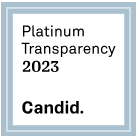CalFresh Alumni Project - Tekara's Story
/Our CalFresh Alumni project champions successful Americans who once received CalFresh/SNAP (food stamps) but who are now independent, contributing members of our community, as well as individuals who currently rely on the program during a time of need. With a temporary lift from this government program that continues to help feed millions of Americans every day, these people are persevering and accomplishing great things. They make San Diego stronger every day. Read their stories; tell us yours.
Meet Tekara Gainey. Tekara works in community engagement and public affairs for a San Diego nonprofit organization. Tekara shares her experience as a CalFresh/SNAP recipient and how it supported her journey to become the successful, independent woman she is today.
Tekara Gainey
At what point in your life did you receive CalFresh/SNAP (food stamps) and why?
I’ve received SNAP at various junctures throughout my life. My earliest memory of SNAP is as a young kid growing up in a single-family household. I later relied on SNAP when I was putting myself through college, both in pursuit of my Bachelors as well as my Masters degrees.
How long were you on CalFresh/SNAP?
In total, I was on CalFresh/SNAP for 7 years.
How did CalFresh/SNAP help you in your time of need?
My mother was working full time and we relied on SNAP to help put food on our table. This was back when SNAP was issued as vouchers. I remember going to the corner store and using our vouchers to purchase basic food items like milk, eggs, and bread. As a student, SNAP helped to alleviate some of the burden associated with working, attending school and paying bills.
How did receiving food assistance make you feel?
Relieved. I was already under an immense amount of stress working and going to school full time, barely able to afford rent, transportation, books, phone bill…the list goes on. Knowing that my capability of putting good, healthy food on the table was not compromised offered a lot of relief. I didn’t have to choose between eating lunch or eating dinner. I could do both. It was one less thing, on a list of many things, I had to worry about.
What are some common misconceptions you have heard people use about CalFresh/SNAP?
I've heard many people claim CalFresh/SNAP is only available to families (adults with young children), persons who are unemployed or homeless individuals. I’ve also heard people say CalFresh/SNAP couldn’t or shouldn’t be used at well-known grocery stores such as Trader Joes or Whole Foods. When speaking about people receiving CalFresh/SNAP, I’ve heard people claim recipients are abusing the system, lack the drive and will to get off SNAP, and are underserving of nice things (i.e., bags, shoes, clothes, etc.). An acquaintance once told me she was surprised to learn I was receiving SNAP benefits because I seemed so “put together”. I guess I wasn’t supposed to comb my hair that day!
What are you most proud of in your life? Or what are your dreams for the future?
I am proud of the life I’ve created for myself. I live in a beautiful city, have a wonderful, supportive, and strong groups of friends and family, and I am doing work that I am passionate about and that is making an impact.
What do you want people to know about food assistance programs like CalFresh/SNAP?
Food assistance programs like CalFresh/SNAP give people control over their lives and choices. During my time of need, prior to receiving food assistance, my choices were often made for me, based on my circumstances. Deciding whether I should spend $50 to purchase a work uniform or put aside money for lunch for the week was a no-brainer. If I wanted a job, I needed the uniform. Going 8-10 hours without eating because I couldn’t afford breakfast AND lunch was not my choice, but rather my circumstance. CalFresh/SNAP made me the ultimate decision maker again, just as it does with others.



























